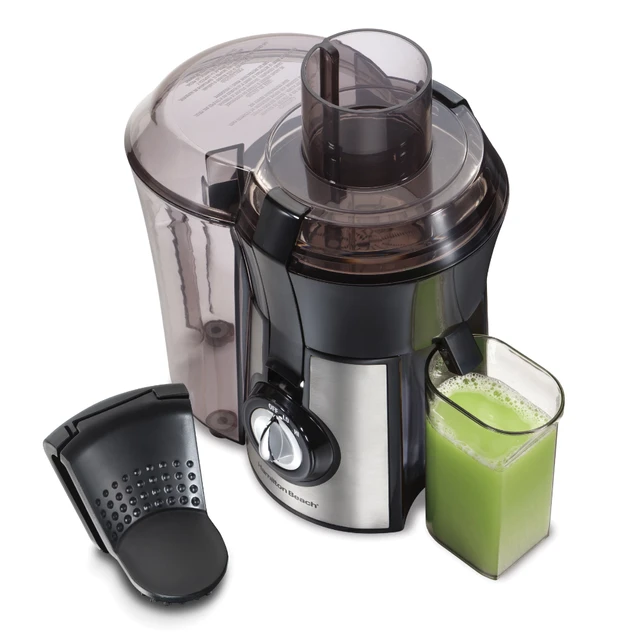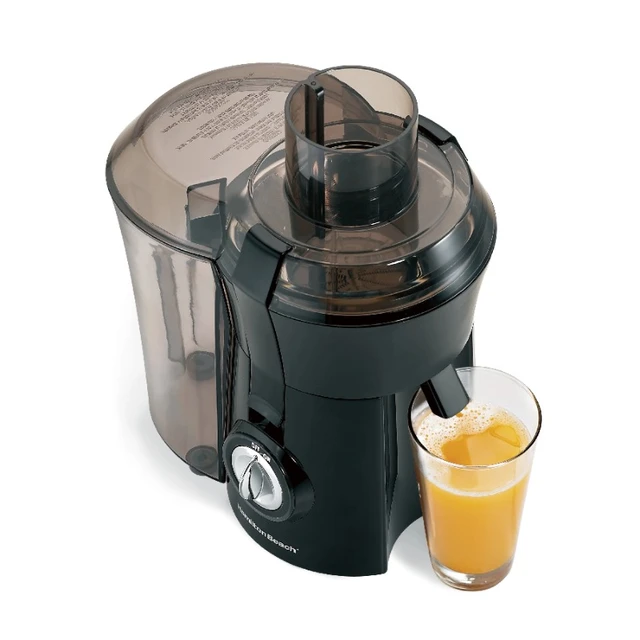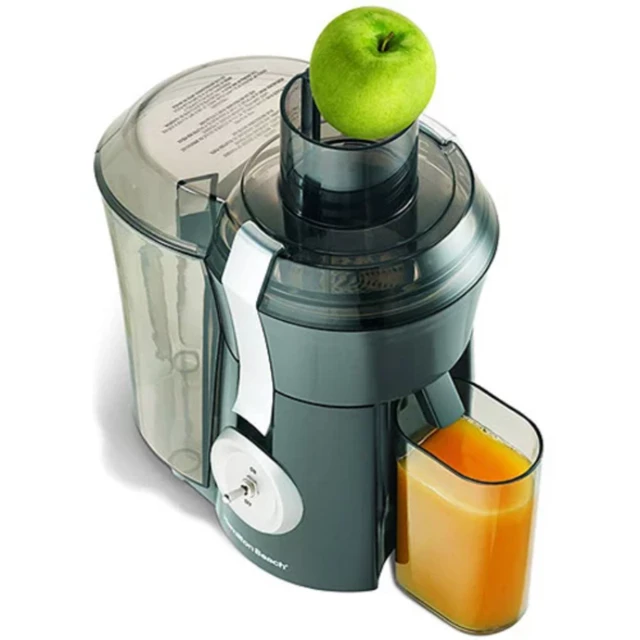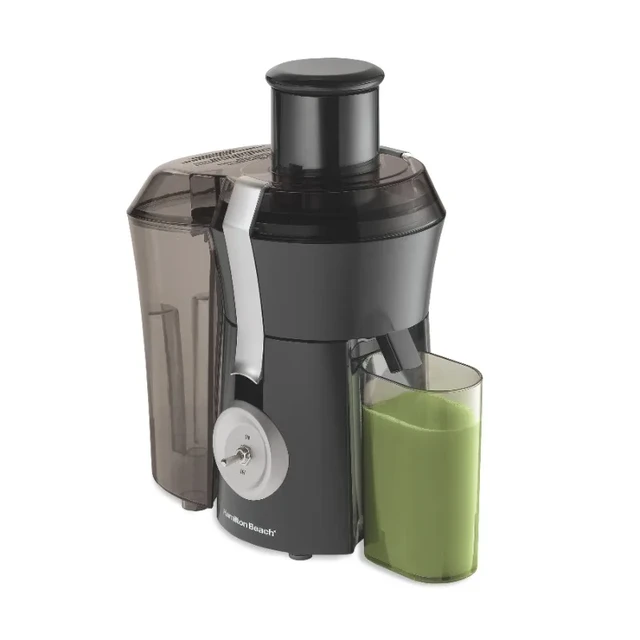
Introduction
To ensure optimal performance and longevity of your Hamilton Beach juicer, proper cleaning after each use is essential. Cleaning a juicer may seem like a tedious task, but it helps prevent the buildup of residue, maintain hygiene, and preserve the juicer’s functionality. In this guide, we will explore the importance of cleaning your Hamilton Beach juicer, provide step-by-step instructions for thorough cleaning, and address common cleaning-related concerns to assist you in maintaining cleanliness and enjoying a hassle-free juicing experience.

Do I have to clean my Hamilton Beach juicer after every use?
I. The Significance of Regular Cleaning
-
Preventing Residue Buildup:
- Juicing leaves behind pulp, fibers, and juice residue, which can accumulate if the juicer is not cleaned promptly. Regular cleaning prevents residue buildup, ensuring that the juicer remains in optimal condition and continues to produce high-quality juice.
-
Maintaining Hygiene:
- Proper cleaning eliminates any potential bacteria or mold growth, maintaining the hygienic standards of the juicer. This is especially crucial considering that juicing involves fresh produce that comes into contact with the juicer’s components.
-
Preserving Performance:
- Over time, leftover pulp and residue can affect the performance of the juicer, causing clogs, reduced juice yield, and even damage to the motor or other parts. Regular cleaning helps preserve the juicer’s performance, ensuring efficient and effective juicing.

II. Step-by-Step Guide to Cleaning Your Hamilton Beach Juicer
-
Unplug and Disassemble:
- Before beginning the cleaning process, unplug the juicer from the power source. Carefully disassemble the juicer by removing all removable parts, such as the pulp container, juice pitcher, lid, and cutting blade accessory.
-
Rinse Removable Parts:
- Rinse all removable parts under running water to remove any visible pulp or juice residue. Use a gentle stream of water to ensure thorough cleaning without damaging the parts.
-
Soak in Warm, Soapy Water:
- Fill a basin or sink with warm water and add a mild dish soap. Submerge the removable parts that require further cleaning, such as the filter basket, cutting blade accessory, and other smaller components. Allow them to soak for a few minutes to loosen any remaining residue.
-
Scrub with a Soft Brush:
- Using a soft-bristled brush, gently scrub the soaked parts to remove any stubborn residue. Pay particular attention to the areas with fine mesh or small crevices, ensuring that all pulp or debris is removed. Take care not to apply excessive force that could damage the parts.
-
Rinse Thoroughly:
- Once the removable parts have been scrubbed, rinse them under running water to remove any soap residue. Ensure that all residual soap or debris is thoroughly flushed away.
-
Dry Completely:
- After rinsing, shake off any excess water from the parts and place them on a clean towel or drying rack. Allow them to air dry completely before reassembling the juicer. Ensure that each part is completely dry to prevent the growth of mold or bacteria.
-
Wipe Down the Base:
- While the removable parts are drying, wipe down the base of the juicer, including the motor and the area surrounding the juicing chamber, with a clean, damp cloth. Ensure that no liquid enters the motor housing or other non-waterproof components.
-
Reassemble the Juicer:
- Once all the parts are thoroughly dried, reassemble the juicer, ensuring that each component is securely in place. Take care to fasten any locking mechanisms or latches to guarantee proper alignment and functioning.

III. Addressing Common Cleaning Concerns
-
Dishwasher-Safe Parts:
- Some Hamilton Beach juicer models may include dishwasher-safe parts. Refer to the user manual to determine which components can be safely cleaned in a dishwasher. Always follow the manufacturer’s instructions and recommendations.
-
Stains on Plastic Parts:
- Over time, certain fruits and vegetables, like carrots or beets, may cause stains on the juicer’s plastic components. To remove stains, make a paste of baking soda and water, apply it to the stained areas, and gently scrub with a soft brush. Rinse thoroughly and repeat if necessary.
-
Cleaning Immediately after Use:
- Cleaning your juicer immediately after each use is highly recommended. Juices and pulp left to dry on the juicer’s components can be more challenging to remove, making the cleaning process longer and more labor-intensive.
-
Maintenance Between Uses:
- If you plan to take a short break between juicing sessions, it is still best to rinse the removable parts and give them a quick clean to prevent any residual pulp from drying and adhering to the surfaces.

V. Extended Care and Maintenance Tips
-
Regular Cleaning Schedule:
- Establish a regular cleaning schedule for your Hamilton Beach juicer, whether it’s after each use or on a weekly basis, depending on your juicing frequency. Consistency is key to maintaining cleanliness and preventing the buildup of residue.
-
Deep Cleaning and Descaling:
- Periodically, perform a deep cleaning of your juicer to remove any mineral deposits or stubborn residue. Follow the manufacturer’s instructions for disassembling and cleaning hard-to-reach parts. You can also use a citric acid solution or a mixture of vinegar and water to descale the juicer if necessary.
-
Lubrication and Maintenance:
- Some juicers require periodic lubrication to ensure smooth operation of moving parts. Check the user manual for any lubrication recommendations and follow them accordingly. Regularly inspect the juicer for signs of wear or damage, and contact Hamilton Beach’s customer service if you notice any issues or require professional assistance.
-
Storage Considerations:
- Proper storage can contribute to the longevity of your juicer. After cleaning and completely drying all components, store them in a clean, dry, and well-ventilated area. Ensure that the juicer is fully assembled and that the cord is neatly and securely stored to prevent tangling or damage.
-
Safe Handling of Components:
- When disassembling or cleaning the juicer, handle the components with care. Avoid using abrasive materials or harsh chemicals, as they can scratch or damage the parts. Additionally, be cautious when handling the cutting blade accessory to prevent any injuries. Follow all safety guidelines outlined in the user manual.
VI. Troubleshooting and Professional Assistance
-
Referencing the User Manual:
- Familiarize yourself with the user manual provided with the Hamilton Beach juicer. It contains specific instructions, troubleshooting tips, and important safety information that can assist you in addressing common concerns or issues that may arise during use or cleaning.
-
Contacting Customer Support:
- In the event of any operational difficulties or if you have specific concerns about cleaning your Hamilton Beach juicer, reach out to Hamilton Beach’s customer support. They can provide personalized assistance, offer additional tips, and address any questions or issues regarding the cleaning process.

IV. Conclusion
Maintaining cleanliness through regular cleaning is an integral part of owning and enjoying a Hamilton Beach juicer. By following the step-by-step cleaning guide and addressing common concerns, you can ensure optimal performance, hygiene, and the longevity of your juicer. Additionally, remember to handle removable parts with care, use gentle cleaning materials, and thoroughly dry all components before reassembling the juicer. By incorporating regular cleaning into your juicing routine, you can enjoy hassle-free juicing sessions, delicious and nutritious juices, and prolonged satisfaction with your Hamilton Beach juicer.





